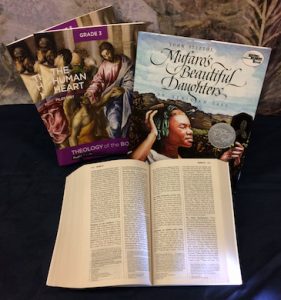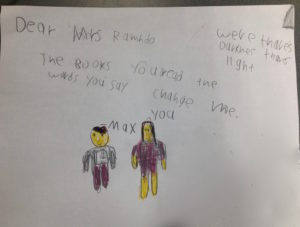
My Classroom Visit to Help Develop K-8 TOB Standards
December 26, 2019
Writing Theology of the Body standards for grades K-8 was a challenge at many levels. Adults can find St. John Paul II’s TOB teachings hard to read so you’d expect it to be all the more difficult to make them “child-friendly”. Just how do you transmit the profound truths of the human person to children in a comprehensible, attractive and convincing way? Furthermore, we are talking about truths that ask not only for the assent of faith but also to be put into practice in one’s daily life.
 During the early stages of my work on the TOB Standards, it helped for me to witness Theology of the Body being taught to young children. Tina Ramundo of Immaculate Heart of Mary in Cincinnati, Ohio was teaching our pilot materials for the second year in a row to multiple classes of the same grade level and she let me come into her classroom a few years ago to observe how 6 to 10 year-olds can learn these truths. In a Third Grade class, I was there when “Mufaro’s Beautiful Daughters” was read. It’s an African version of the Cinderella story, with Nyasha as the Cinderella-like character and Manyara as a cruel stepsister icon.
During the early stages of my work on the TOB Standards, it helped for me to witness Theology of the Body being taught to young children. Tina Ramundo of Immaculate Heart of Mary in Cincinnati, Ohio was teaching our pilot materials for the second year in a row to multiple classes of the same grade level and she let me come into her classroom a few years ago to observe how 6 to 10 year-olds can learn these truths. In a Third Grade class, I was there when “Mufaro’s Beautiful Daughters” was read. It’s an African version of the Cinderella story, with Nyasha as the Cinderella-like character and Manyara as a cruel stepsister icon.
One of the learning objectives for this story is that the students are able to recognize and contrast two opposing worldviews. The one worldview perceives the world as a threat, as something to be controlled and manipulated. Attitudes of selfishness, greed and defensiveness accompany that vision of reality. On the other hand, the worldview proposed by St. John Paul II involves perceiving the world and others as good gifts. Attitudes that flow from this latter perspective are wonder, gratitude, respect and confidence in one’s own goodness. An assessment we propose in our curriculum is for the students to draw side-by-side pictures of what each kingdom would resemble if Nyasha were queen versus what it would look like if Manyara were queen.
The Third Graders evidently relished this activity and were eager to share what they had imagined. I was privileged to be able to walk around viewing their works of art in progress and was moved at how much the children were able to transmit through their drawings. On the side of Nyasha, she was joyfully serving her people and they were portrayed as happy. Significantly, a number of illustrations included signs announcing, “All are welcome”. On the other side, Manyara was always giving orders to her people who were there to serve her; and she was usually figured as belittling people. Often times the people were presented as slaves. Unhappiness reigned throughout that land. I doubt these children learned the vocabulary word “worldview,” but through their drawings they manifested that they had captured its meaning and application. The lesson then spills over into their own lives because they want to emulate Nyasha and abhor the thought of being like Manyara.
At the end of that school year, a Second Grade boy left a drawing on Tina’s desk as a parting thank you gift. He was standing next to Tina in the picture and both were smiling. Above, he had scrawled these  words:
words:
“The books you read, the words you say change me”. In the corner was this affirmation “Where there is darkness there is light”.
In the end, it’s not surprising that children are able to learn deep truths about the human person and put them into practice. In some way, they are “closer” and more open than adults to what it is to be fully human.
It gives me joy to think that Standards for Christian Anthropology now exist for grades K-8 and I hope that they will be of service for many children to learn foundational truths about who they are and their exalted calling as children of God.
Share